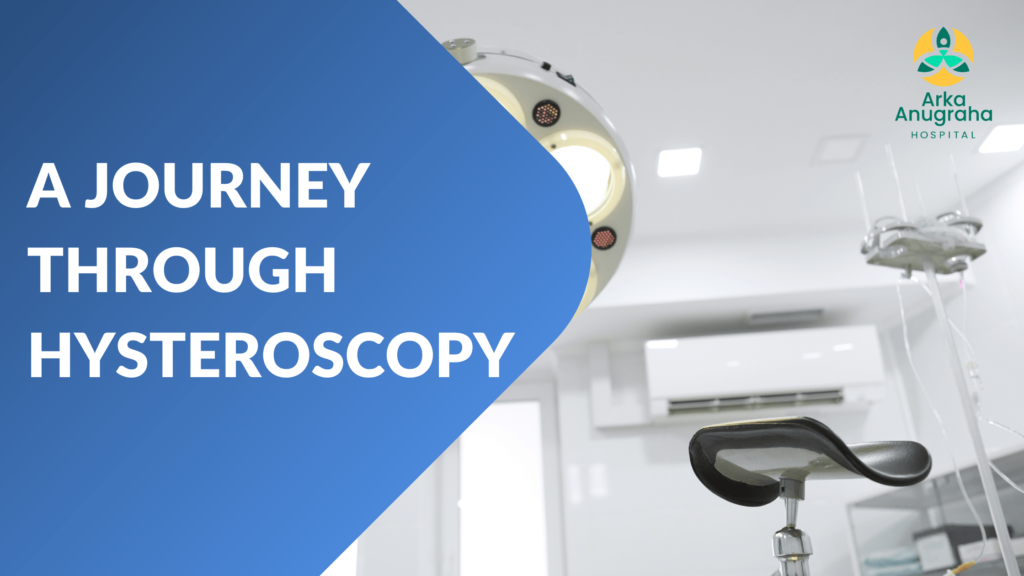
It is a modern technique in which the uterine cavity is visualized using a Hysteroscope (Endoscope). A telescope with light is introduced through the cervix to visualize the inside of the uterine cavity. It serves as both Diagnostic and Therapeutic in the management of various gynaecological problems.
Usually, Hysteroscopy is needed for diagnosis and surgical treatment of Uterine (Cavity) pathologies.
Hysteroscopy has advantages over a D&C because the doctor can take tissue samples of specific areas and view any fibroids, polyps, or structural abnormalities that can be missed on D & C
Infertility due to pathologies in the uterine cavity like Polys, Sub mucous Fibroids, Intrauterine Septum, Intrauterine adhesions, T shaped uterus can be managed by Hysteroscopic surgery. The advantages of Hysteroscopy are
Your Consultant will do a thorough evaluation of your health condition. Necessary investigations are done and the Physician’s opinion on the fitness of surgery is taken. The patient has explained the problem she is facing and the need for surgery.
The advantages and disadvantages of the procedure are explained. The patient is given all the necessary information to be followed before getting admitted for the procedure.
After admission to the hospital, a few medications are given before shifting to the operation theatre. The patient is administered General anaesthesia and the necessary position is given. Preparation of the parts under aseptic condition and draping is done. Routinely cervical dilatation is not performed.
Hysteroscope is connected to the Camera, light cable and Saline tubing (for distension of the uterine cavity). Hysteroscope is negotiated through the cervix to enter the uterine cavity. The openings of the tube (Ostia) are visualized. The inner lining of the uterine cavity (Endometrium) is thoroughly assessed to look for any polyps, Fibroid, Unhealthy endometrium, or adhesions. The telescope is withdrawn slowly to visualize the cervical canal.
Hysteroscopic guided endometrial biopsy is taken based on the case and sent for necessary evaluation. The vagina is toileted with antiseptics. The patient is placed in a sleeping position before she recovers from anaesthesia. She is observed in the OT / Recovery room till she is fully conscious and fit to stay in the room.
In the recovery room, the patient is given drips for 4 hours along with analgesics. Sips of water are given after 4 hours and then a liquid diet. A soft diet is started once she tolerates liquids well. Mobilization out of bed is done once the patient is completely recovered from anaesthesia.
It involves surgical correction of the pathology detected on Diagnostic Hysteroscopy by using a Special Hysteroscope (Bettochi’s or Resectoscope).
The patient is fit for discharge only after she is tolerating liquids well and has passed urine on her own. At discharge, all the necessary information about diet, medications, ambulation, bathing, return to work and other daily activities are explained. All the signs/symptoms which may require an early return to the hospital are explained.
At the time of discharge, the patient has instructed the date for follow-up (usually 5-7 days). A further line of treatment will be decided based on biopsy reports in certain cases.
Office (See and treat) Hysteroscopy- A ultra-thin hysteroscope of 1.8 mm is used for evaluation without anaesthesia on an outpatient basis without cervical dilatation. Hence, the patient comes to OPD for a check-up and undergoes a hysteroscopy and returns home. There is also an advantage of even treating a few pathologies like septal resection, polypectomy, myoma resection of small size, and foreign body removal. This reduces the costs of admission to the patient.

Arka Anugraha Hospital dedicated to empower you regarding gut health, detox, weight loss, chronic conditions, metabolic syndrome, diabetes, and obesity.